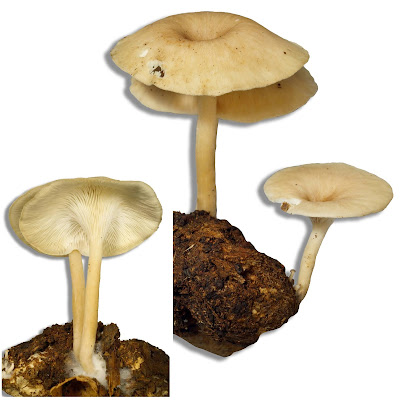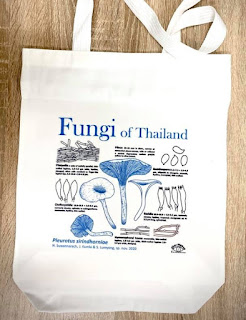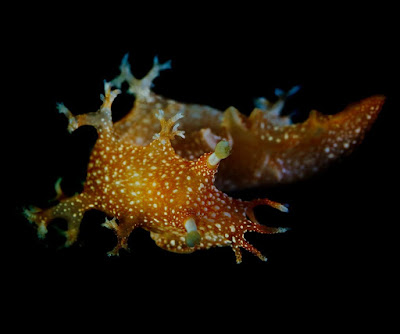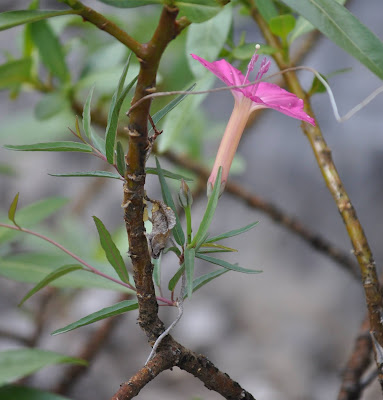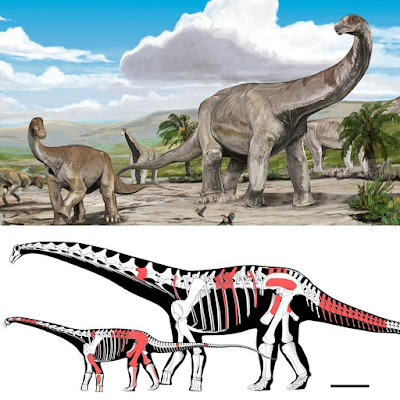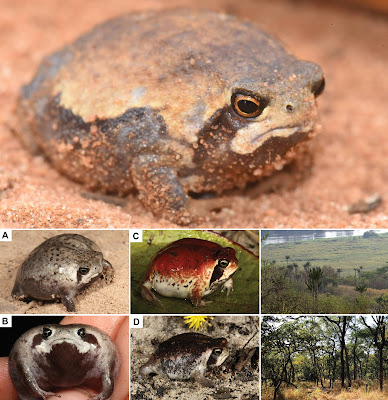[Most Recent Entries] [Calendar View]
Wednesday, October 28th, 2020
| Time | Event | ||||
| 1:32a | [Fungi • 2020] Pleurotus sirindhorniae (Agaricales: Pleurotaceae) • A New Species from northern Thailand
Abstract A new saprophytic fungus, Pleurotus sirindhorniae, is described based on collections from northern Thailand. This species is characterized by greyish yellow to olive brown pileus, ellipsoid to elongate basidiospores and clavate to mucronate cheilocystidia. It is distinguished from the previously described Pleuotus species by its distinct morphological characteristics. Molecular phylogenetic analyses of the large subunit (LSU) and internal transcribed spacers (ITS) of the nuclear ribosomal DNA (rDNA), the translation elongation factor 1-alpha (tef1) and the RNA polymerase II largest subunit (rpb1) genes also support P. sirindhorniae as a distinct new species within the genus Pleurotus. A full description, color photographs, illustrations and a phylogenetic tree to show the position of P. sirindhorniae are provided. Keywords: Oyster mushroom, phylogeny, saprophytic fungi, taxonomy, Fungi Nakarin Suwannarach, Jaturong Kumla, Kanitta Satienperakul, Witchaphart Sungpalee, Kriangsak Sri-Ngernyuang and Saisamorn Lumyong. 2020. Pleurotus sirindhorniae (Pleurotaceae, Agaricales), A New Species from northern Thailand. Phytotaxa. DOI: 10.11646/phytotaxa.460.4.6 นักวิจัย มช. ค้นพบ “เห็ดพันธุ์อัปสร” เห็ดชนิดใหม่ของโลก นักวิจัย มช. ค้นพบ “เห็ดพันธุ์อัปสร” เห็ดชนิดใหม่ของโลก และได้รับพระราชทานชื่อสามัญจากสมเด็จพระก ทีมความหลากหลายทางชีวภาพด้านเห็ดราวิทยา โดย ศาสตราจารย์เกียรติคุณ ดร.สายสมร ลำยอง หัวหน้าศูนย์วิจัยด้านความหลากหลายของจุลิ เมื่อวันที่ ๒๕ มีนาคม พ.ศ. ๒๕๖๓ ที่ผ่านมา มหาวิทยาลัยเชียงใหม่ได้รับพระราชทานชื่อเ เห็ดพันธุ์อัปสร สามารถเพาะเลี้ยงเป็นเส้นใยบริสุทธิ์ได้ใน เห็ดนางฟ้าที่มีรายงานในประเทศไทย ซึ่งเห็ดสกุลนางฟ้า (Pleurotus spp.) ซึ่งมีรูปร่างความคล้ายคลึงกันเห็ดนางรมซึ ลักษณะที่แตกต่างของเห็ดสกุลนางฟ้าที่มีกา โดยอาศัยการศึกษาลักษณะทางสัณฐานวิทยาของด ซึ่งการวิเคราะห์ความสัมพันธ์เชิงวิวัฒนาก 1. รองศาสตราจารย์ ดร.เกรียงศักดิ์ ศรีเงินยวง ทีมวิจัยความหลากหลายของทรัพยากรพืชป่า มหาวิทยาลัยแม่โจ้ 2. ศาสตราจารย์ เกียรติคุณ ดร.สายสมร ลำยอง ทีมวิจัยเห็ดราขนาดใหญ่ มหาวิทยาลัยเชียงใหม่ 3. ดร.นครินทร์ สุวรรณราช ทีมวิจัยเห็ดราขนาดใหญ่ มหาวิทยาลัยเชียงใหม่ 4. ดร.จตุรงค์ คำหล้า ทีมวิจัยเห็ดราขนาดใหญ่ มหาวิทยาลัยเชียงใหม่ 5. ผู้ช่วยศาสตราจารย์ ดร.ปิยะวรรณ สุทธิประพันธ์ ทีมวิจัยความหลากหลายของแมลง มหาวิทยาลัยเชียงใหม่ 6. ผู้ช่วยศาสตราจารย์ ธีระพงษ์ เสาวภาคย์ ทีมวิจัยความหลากหลายของสัตว์ป่า มหาวิทยาลัยเชียงใหม่ 7. อาจารย์ ดร.สุธีระ เหิมฮึก ทีมวิจัยความหลากหลายของทรัพยากรพืชป่า มหาวิทยาลัยแม่โจ้ 8. ผู้ช่วยศาสตราจารย์ ดร.วิชญ์ภาส สังพาลี ทีมวิจัยความหลากหลายของทรัพยากรพืชป่า มหาวิทยาลัยแม่โจ้ 9. ผู้ช่วยศาสตราจารย์ ดร.ขนิษฐา เสถียรพีระกุล ทีมประเมินการใช้ประโยชน์ทรัพยากรความหลาก 10. ผู้ช่วยศาสตราจารย์ ดร.ลักษณา สัมมานิธิ ทีมวิจัยภูมิสารสนเทศความหลากหลายทางชีวภา 11. นายวิสูตร แดงบุตร ทีมวิจัยความหลากหลายของทรัพยากรพืชป่า มหาวิทยาลัยแม่โจ้ | ||||
| 2:00a | [Mollusca • 2020] Habitat, Morphology and Trophism of Tritonia callogorgiae sp. nov., A Large Nudibranch Inhabiting Callogorgia verticillata Forests in the Mediterranean Sea
Highlights • A forest of the Primnoidae Callogorgia verticillata was found in the Adriatic Sea. • The forest develops between 420 and 426 m depth, with a mean density of 1.34 colonies m−2. • The nudibranch Tritonia callogorgiae sp. nov. is described strictly associated with the corals. • Our study describes the first deep-sea tritoniid in the Mediterranean Sea. • Stomach content analysis showed that Tritonia callogorgiae sp. nov. feeds on C. verticillata. Abstract The continuing exploration of the Mediterranean deep sea reveals that a complete census of the biodiversity of one of the most studied marine areas in the world is yet to be fully accomplished. A tritoniid nudibranch new to science is described upon material recovered off the Montenegro margin, Adriatic Sea, associated with the alcyonacean Primnoidae Callogorgia verticillata (Pallas, 1766). Here, a coral forest dominated by C. verticillata, together with other alcyonaceans, antipatharians and scleractinians, represents the habitat of the new species. As documented by Remotely Operated Vehicle (ROV) observations, the coral forest covers an area of 600 m2 at 420–426 m depth, with dense growth of C. verticillata colonies (1.34 ± 0.08 colonies m−2). As many as 66 nudibranch specimens have been observed on C. verticillata. Tritonia callogorgiae sp. nov. (Gastropoda, Nudibranchia, Tritoniidae) is up to 12 cm long, yellow to orange/reddish in colour with white papillae all over the body. It has a velum with six appendages (three per side), and 4–5 pairs of dichotomous gills. Internally, the species is distinguished from other tritoniids for the absence of stomach plates and a distinctive radula with formula 50 × 110.1.1.1.108. It represents the first case of Tritonia species living in the deep Mediterranean Sea and the only one associated to C. verticillata. Stomach content documents that Tritonia callogorgiae sp. nov. feeds on C. verticillata. Further visual ROV records from other sectors of the Mediterranean Sea indicate that the distribution of this new described species is almost basin-wide. The discovery of another undescribed member of the benthic megafauna related to deep-sea coral grounds further highlights the need for conservation of such habitats. Keywords: Coral forest, Alcyonacea, Primnoidae, Mollusca, Nudibranchia, Mediterranean sea
Order Nudibranchia Cuvier, 1817 Family Tritoniidae Lamarck, 1809. Genus Tritonia Cuvier, 1798 Tritonia callogorgiae Chimienti, Furfaro & Taviani, sp. nov. Etymology: The name identifies the consistent association of the news species with the Primnoidae sea fan Callogorgia verticillata. Conclusions: The presence of rare or uncommon taxa represents a robust argument for the consideration of their host habitats as meritorious for proper conservation measures. In this respect, forests of C. verticillata represent a unique habitat for several associated species, including the newly discovered Tritonia callogorgiae sp. nov. This study provides the elements to identify this noticeable species even based solely on images and without the need of complex sampling operations. It is expected that further records of T. callogorgiae sp. nov. will be added in the future, as part of new deep-sea explorations and monitoring programs all over the Mediterranean Sea. Colorful and extravagant invertebrates like nudibranchs are often noted for their vibrant colour palettes and widely appreciated from an aesthetic point of view. They could thus act as ‘flag species’ to push general public and decision makers towards the importance to protect the vulnerable habitats where they live. Giovanni Chimienti, Lorenzo Angeletti, Giulia Furfaro, Simonepietro Canese and Marco Taviani. 2020. Habitat, Morphology and Trophism of Tritonia callogorgiae sp. nov., A Large Nudibranch Inhabiting Callogorgia verticillata Forests in the Mediterranean Sea. Deep Sea Research Part I: Oceanographic Research Papers. 165: 103364. DOI: 10.1016/j.dsr.2020.103364 | ||||
| 2:19a | [Botany • 2020] Ipomoea noemana (Convolvulaceae) • A New Species from Ancash eastern Slope in Peru
Abstract Ipomoea noemana, a new species of Ipomoea endemic to the Marañón river area in Peru and known from a single population, is described and illustrated. Its relationship with other species of Ipomoea is discussed in the light of its morphology and molecular analysis of DNA barcode sequences. Keywords: Convolvulaceae, endemism, Marañon area, new species, storage roots, Eudicots Enoc Jara, Pablo Muñoz-Rodríguez, John R. I. Wood and Hamilton Beltrán. 2020. Ipomoea noemana (Convolvulaceae) A New Species from Ancash eastern Slope in Peru. Phytotaxa. 461(4); 286–294. DOI: 10.11646/phytotaxa.461.4.5 | ||||
| 4:24a | [Paleontology • 2020] Bravasaurus arrierosorum & Punatitan coughlini • Two Late Cretaceous Sauropods reveal Titanosaurian dispersal across South America
Abstract South American titanosaurians have been central to the study of the evolution of Cretaceous sauropod dinosaurs. Despite their remarkable diversity, the fragmentary condition of several taxa and the scarcity of records outside Patagonia and southwestern Brazil have hindered the study of continental-scale paleobiogeographic relationships. We describe two new Late Cretaceous titanosaurians from Quebrada de Santo Domingo (La Rioja, Argentina), which help to fill a gap between these main areas of the continent. Our phylogenetic analysis recovers both new species, and several Brazilian taxa, within Rinconsauria. The data suggest that, towards the end of the Cretaceous, this clade spread throughout southern South America. At the same locality, we discovered numerous accumulations of titanosaurian eggs, likely related to the new taxa. With eggs distributed in three levels along three kilometres, the new site is one of the largest ever found and provides further evidence of nesting site philopatry among Titanosauria. Systematic palaeontology Sauropoda Marsh, 1878 Titanosauria Bonaparte and Coria, 1993 Colossosauria González Riga et al., 2019 Punatitan coughlini gen. et sp. nov. Etymology. ‘Puna’ is the local name that distinguishes the oxygen-depleted atmosphere typical of the high Andes, and ‘coughlini’ refers to the geologist Tim Coughlin, who reported the first dinosaur fossils in the area. Holotype. CRILAR-Pv 614 (Paleovertebrate Collection of Centro Regional de Investigaciones Científicas y Transferencia Tecnológica de La Rioja, Argentina), partial skeleton composed of the anterior portion of posterior cervical vertebra (likely C12), two middle dorsal vertebrae (likely D6–D7), partial sacrum, 13 articulated caudal vertebrae (some with articulated haemal arches), right pubis, left ischium, and several dorsal ribs. Horizon and type locality. Sandstone levels 170 m above the base of the Ciénaga del Río Huaco Formation (Campanian-Maastrichtian) at QSD, La Rioja, NW Argentina (Geological Setting in Supplementary Information). Diagnosis. A medium-sized titanosaurian sauropod characterised by the following combination of features (autapomorphies marked with an asterisk): (1) middle dorsal vertebrae (likely D6–D7) with anterior and posterior spinodiapophyseal laminae (spdl) forming wide and flat surface, between aliform and transverse processes*; (2) accessory posterior centrodiapophyseal lamina (apcdl) crossed over by the posterior centroparapophyseal (pcpl) lamina, forming a X-shaped intersection in D6–D7; (3) pcpl reaches the bottom of posterior centrodiapophyseal lamina (pcdl) in D6–D7*; (4) extra-depression ventrally to intersection of pcpl and apcdl in D6–D7*; (5) deep postzygodiapophyseal centrodiapophyseal fossa (pocdf) in D6–D7; (6) neural spine of D6 tapering dorsally, forming an inverted-“V” profile in anterior/posterior view; (7) caudal transverse processes persist beyond Ca15; (8) slightly anteriorly inclined neural spines in anterior-middle caudal vertebrae (Ca5–6 to Ca10); and (9) distally expanded prezygapophyses in anterior-middle caudal vertebrae. Bravasaurus arrierosorum gen. et sp. nov. Etymology. Bravasaurus, referred to the Laguna Brava, a lake that gives name to the Laguna Brava Provincial Park, and arrierosorum, refers to [Arriero] the people who crossed the Andes carrying cattle during the 19th century. Holotype. CRILAR-Pv 612, right quadrate and quadratojugal, four cervical, five dorsal, and three caudal vertebrae, few dorsal ribs, three haemal arches, left humerus, fragmentary ulna, metacarpal IV, partial left ilium with sacral ribs, right pubis, partial ischium, left femur, and both fibulae. Paratype. CRILAR-Pv 613, isolated tooth, right ilium, right femur, and dorsal ribs. Horizon and type locality. Sandstone levels 34 m above the base of the Ciénaga del Río Huaco Formation (Campanian-Maastrichtian) at QSD, La Rioja, NW Argentina (Geological Setting in Supplementary Information). Diagnosis. A small-sized titanosaurian sauropod characterised by the following association of features (autapomorphies marked with an asterisk): (1) quadrate with articular surface entirely divided by medial sulcus*; (2) sprl forms conspicuous step between neural spine and prezygapophyses, in middle cervical vertebrae*; (3) strongly depressed centra (up to twice as wide as tall) in posterior dorsal vertebrae; (4) robust dorsal edge of pneumatic foramen in dorsal centra, forming prominent shelf that extends laterally, beyond the level of the ventral margin of the centum*; (5) posterior dorsal vertebrae with a rough posl, ventrally interrupted by middle spinopostzygapophyseal laminae (m.spol) that contact the postzygapophyses; (6) posterior dorsal vertebrae with small ventral spinopostzygapophyseal fossa (v.spof) delimited dorsally by the m.spol and ventrally by the interpostzygapophyseal lamina (tpol); (7) humerus with narrow midshaft, with midshaft/proximal width ratio of 0.36; (8) deltopectoral crest of the humerus expanded distally; (9) slender fibula (Robustness Index [RI]49 = 0.15); (10) distal condyle of the fibula transversely expanded, more than twice the midshaft breadth. E. Martín Hechenleitner, Léa Leuzinger, Agustín G. Martinelli, Sebastián Rocher, Lucas E. Fiorelli, Jeremías R. A. Taborda and Leonardo Salgado. 2020. Two Late Cretaceous Sauropods reveal Titanosaurian dispersal across South America. Communications Biology. 3: 622. DOI: 10.1038/s42003-020-01338-w | ||||
| 11:05a | [Herpetology • 2020] Breviceps ombelanonga • A New Species of Rain Frog (Brevicipitidae, Breviceps) endemic to Angola
Abstract Recent molecular phylogenetic work has found that Breviceps Merrem, 1820 comprises two major clades, one of which, the B. mossambicus group, is widely distributed across southern sub-Saharan Africa. This group is notable for harboring abundant cryptic diversity. Of the four most recently described Breviceps species, three are members of this group, and at least five additional lineages await formal description. Although Breviceps has long been known to occur in Angola, no contemporary material has been collected until recently. The three most widespread taxa, B. adspersus, B. mossambicus, and B. poweri, may all occur in Angola, but accurate species assignment remains challenging given the rampant morphological similarity between these taxa, and, until recently, the lack of genetic resources. Phylogenetic, morphological, and acoustic analyses of recently collected samples from disparate localities within Angola provide evidence for an undescribed species that is sister to B. poweri. The new species can be diagnosed from its sister taxon by lacking pale spots along the flanks, a pale patch above the vent, and a short, dark band below the nares (all present in B. poweri). Additionally, the male advertisement call differs from the three other Breviceps that might occur in Angola in having both a longer interval between consecutive calls and a higher average dominant frequency. We here describe this lineage as a distinct species, currently only known from Angola, and discuss the presence of other Breviceps taxa within Angola. Keywords: Afrobatrachia, Anura, Breviceps ombelanonga sp. nov., cryptic species, multilocus, novel species, Sub-Saharan Africa Breviceps ombelanonga sp. nov. Suggested common names: Angolan Rain Frog (English), Sapinho das Chuvas de Angola (Português). Breviceps gibbosus: Bocage (1870: 68). Breviceps gibbosus: Bocage (1873: 227). Breviceps mossambicus: Bocage (1895: 182); Parker (1934: 194); Monard (1937: 29, 1938: 56); Laurent (1964: 156); Cei (1977: 17, 18); Ruas (1996: 23). Rana mossambicus: Hellmich (1957: 30). Breviceps “mossambicus-adspersus” complex: Poynton (1982: 67); Ruas (2002: 142). Breviceps adspersus [part]: Poynton and Broadley (1985: 52). Breviceps sp.: Marques et al. (2018: 81); Ceríaco et al. (2020: 63). Breviceps cf. adspersus: Baptista et al. (2019: 270). Diagnosis: A species referable to Breviceps due to the following characteristics (Poynton 1964; Minter et al. 2017): snout extremely abbreviated; mouth narrow and downturned near jaw joint; short limbs which, at rest in life, are held close to the body, not projecting beyond the body outline; digits I and V short or rudimentary; inner metatarsal tubercle well developed and notably longer than pedal digit III, narrowly separated from a prominent conical outer metatarsal tubercle. Additionally, the results of the molecular phylogenetic analyses support this species as embedded within the diversity of Breviceps, specifically within the B. mossambicus group (Fig. 1B). Breviceps ombelanonga can be diagnosed from other species of Breviceps and especially those in the B. mossambicus group by the combination of lacking a visible tympanum, males having a single, uniformly dark gular patch that is continuous with the mask extending from the eye, having generally smooth dorsal skin, lacking many small tubercles on the palmar surfaces (as in, e.g., B. branchi and B. sylvestris; FitzSimons 1930; Channing 2012), lacking pale spots along flanks and a pale patch above the vent (both present in B. poweri; Parker 1934; du Preez and Carruthers 2017), lacking short dark band below nares (as in B. poweri; du Preez and Carruthers 2017), lacking confluent inner and outer metatarsal tubercles, having a relatively narrower head, shorter thigh, and shorter manual digit III (Fig. 2; Table 4), and having an advertisement call with both a longer interval between consecutive calls and a higher average dominant frequency (Fig. 3).
Distribution: Based on our phylogenetic analysis, this species is currently confirmed from three widely separated localities and elevations ranging from near sea level to > 1400 m: i) Kissama National Park, on the outskirts of Angola’s capital city, Luanda, in coastal western Angola (Luanda Province); ii) central Angola (Bié Province); and iii) the source of the Cuanavale, Cuito, Cuando and Quembo rivers (Moxico Province). The identity of other known Angolan localities for Breviceps (black diamonds) remain uncertain without additional sampling and genetic data (Fig. 1, Appendix 1; see Marques et al. 2018). Habitat and natural history notes: The preferred habitat for B. ombelanonga ranges from typical western Angolan savannah, with sandy soils and vegetation dominated by Adansonia digitata, Euphorbia conspicua, Acacia welwitschii and Combretum sp., together with a good grass coverage (Grandvaux-Barbosa 1970), to dense Angolan wet miombo woodland in the east (Fig. 7). The type series was collected after gentle rains, either by hand or in traps. The holotype was first observed feeding on small, unidentified ants (family Formicidae). No information is available on egg deposit sites and clutch sizes. One of us (WC) has discovered remains of B. ombelanonga in the stomach contents of two snake species, Kladirostratus acutus (Psammophiidae; PEM R23450) and Causus bilineatus (Viperidae; PEM R23321) from the Cuando and Cuito River sources, respectively. Etymology: The name ombelanonga is a derived combination of two words in Umbundu, a native Angolan language, for rain (ombela) and frog (anonga). The species epithet is used as an invariable noun in apposition to the generic name. Conservation status: Given that it appears widely distributed, we suggest that B. ombelanonga be included in the IUCN category of Least Concern. The type locality lies within Kissama National Park, which grants some legal protection from major habitat degradation and loss, though the park has recently experienced significant wildfires. Additionally, the paratype localities in southeastern Angola (visited during field activities related to the National Geographic Okavango Wilderness Project 2017) are relatively pristine and ecologically intact miombo savannah that comprise an area recently proposed for formal protection. Stuart V. Nielsen, Werner Conradie, Luis M. P. Ceríaco, Aaron M. Bauer, Matthew P. Heinicke, Edward L. Stanley and David C. Blackburn. 2020. A New Species of Rain Frog (Brevicipitidae, Breviceps) endemic to Angola. ZooKeys. 979: 133-160. DOI: 10.3897/zookeys.979.56863  Resumo: Investigações moleculares recentes revelaram que o género Breviceps Merrem, 1820, é composto por duas linhagens principais, uma das quais, o grupo B. mossambicus, é amplamente distribuído na região sul da África subsaariana. Este grupo é notável por albergar uma abundante diversidade críptica. Das quatro espécies de Breviceps recentemente descritas, três pertencem a este grupo, e pelo menos outras cinco linhagens adicionais aguardam a sua descrição formal. Apesar de o género ser conhecido de Angola desde há muito tempo, só muito recentemente foram colhidos novos espécimes. Os três taxa mais amplamente distribuídos, B. adspersus, B. mossambicus e B. poweri podem todos, porventura, ocorrer em Angola, no entanto a correta identificação destas espécies têm sido problemática devido às semelhanças morfológicas extremas entre este taxa, e, até muito recente, a completa ausência de material genético. Análises filogenéticas, morfológicas e acústicas dos espécimes recentemente colhidos em diferentes locais de Angola apontam para a existência de uma espécie nova para a ciência, irmã de B. poweri. A nova espécie pode ser diferenciada do seu táxon irmão pela falta de marcas pálidas nos flancos, mancha pálida acima do ventre e pequena banda negra abaixo do nariz (presentes em B. poweri). Para além destas características, o chamamento dos machos difere das outras três espécies de Breviceps que podem ocorrer em Angola por ter um maior intervalo entre chamamentos consecutivos e uma maior frequência média dominante. Descrevemos aqui esta linhagem como uma espécie distinta, atualmente apenas conhecida de Angola, e discutimos a presença de outras espécies de Breviceps em Angola. Palavras Chave: África Subsahariana, Afrobatrachia, Anura, Breviceps ombelanonga sp. nov., espécies crípticas, espécies novas, multilocus |
| << Previous Day |
2020/10/28 [Calendar] |
Next Day >> |
